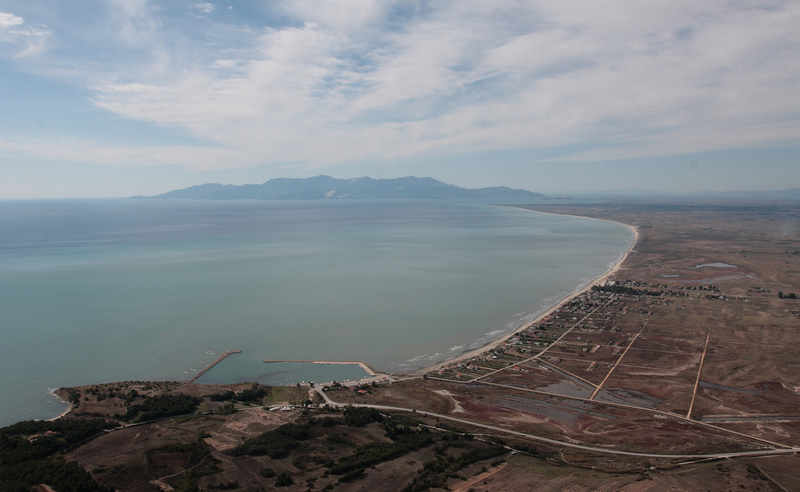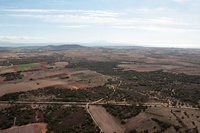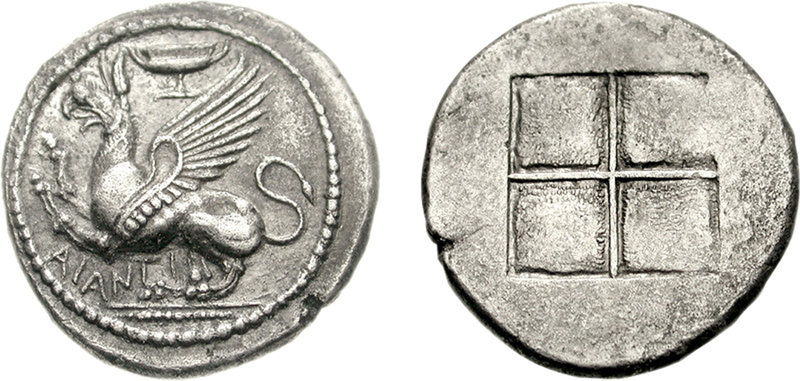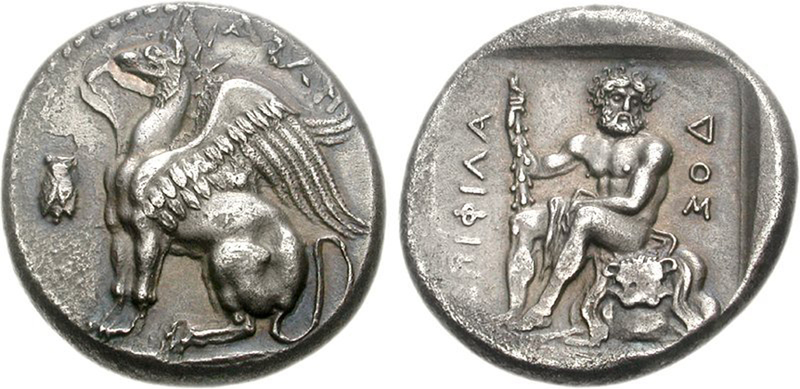Archaeological site


Gradually, the colonists consolidate their presence, and achieved with rapid growth to create a powerful city-state, with a strong currency which was also a member of the Athenian Alliance. Coins of Abdera we found from ancient Istro, at the estuary of Danube, up to Egypt and Syria, but also from the southern Asia Minor and Mesopotamia, all the way to the west and the Cyrenaica peninsula, indicating that Abdera was a big entity in trading which also had a considerable fleet, something that is confirmed today by identifying the five ports of the city.
The exploitation of farming in the inland, with the rich Thracian plain, in combination with trade, resulted to a great economic growth and prosperity in the city. The coins of Abdera, with the great thematic range, were widely spread to the then ancient world. The first minting of coins took place at approximately 520 – 515 BC. During all the historical periods of the city, the representations of the front side of the coins were always related to one mythical being, the Griffin, which also symbolizes the light. Griffin is also related with the god Apollo, but also with wisdom, strength and vigilance. During several chronological periods, on the back side of the coins there were representations of Apollo, Hercules, and Hermes, all as protectors of the city and their figures were complemented with cobs, beetles, dolphins, bulls and often with a square stamp.
A silver four drachmas coin of Abdera during the Classical period: Representation of the Griffin, a mythological creature and symbol of the city, who stands on a guarding pose and is facing the left, and there is also a repousse goblet. On the upper and lower end of this side of the coin there is the word: EANTI. 5th century BC (approximately 480 – 473 BC), 26mm in diameter and weighing 14.14 grams. On the reverse side it appears an incuse square which is divided into four sections.
Silver stater of Abdera, Hellenistic period: Representation of the Griffin, a mythological creature and symbol of the city, who stands on a guarding pose and is facing the left, also engraved on the left of the Griffin, there is a cicada and right above it, there is the word: ABDE. 4th century BC (approximately 395 – 360 BC), weighing 12.62 grams. On the back side of the coin appears Hercules naked while sitting and his position is towards the left as he turns his head a bit to the right. Hercules is sitting on top of a lion skin, on a rock and he holds on his right hand a club which he places it on top of his right knee. Around the figure of Hercules there is the word: EPI FILADOS









